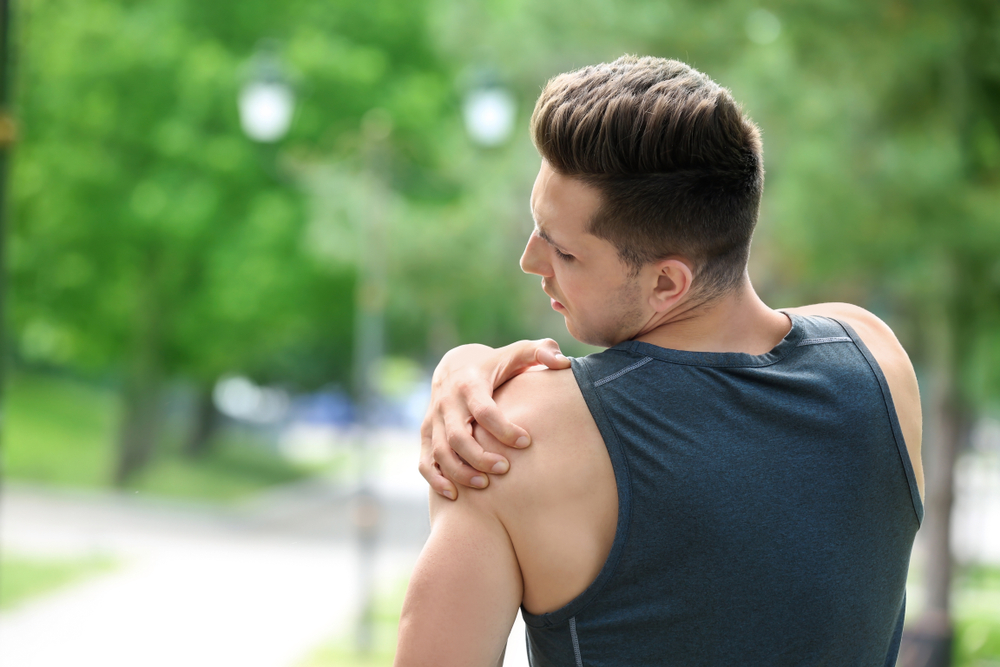Does your shoulder feel painful? Is the joint hard to move? It could be because of a labral tear.
Lining the socket of your shoulder is a thick, rubbery band of cartilage known as the labral. It’s what holds the ball of the shoulder in place and gives the joint stability. Considering how often you use your shoulder joint to play sports, lift objects, and perform everyday tasks, it’s not surprising that you can tear or fray the labral cartilage from an injury or overuse.
A painful shoulder is usually the first sign of a labral tear. The shoulder may also feel unstable with a feeling of grinding, popping, or catching in the joint. You may notice your shoulder can’t rotate as it once did. Patients often complain of a “dead arm” sensation with a labral tear. Depending on the type and severity of the damage, a labral tear can be healed with conservative treatment or surgery.
Types of labral tears
A labral tear in the shoulder is similar to a hip labral tear. Both the shoulder and hip are ball-and-socket joints secured by cartilage surrounding the socket of the joint. This cartilage can be torn or worn down in either joint.
In the shoulder, the labral tear can either be a complete rupture from the bone, or a fraying or tearing along the edges of the labral. Sometimes, a labral tear involves the biceps tendon attached to the socket bone. In this case it is known as a SLAP tear (superior labrum from anterior to posterior tear).
SLAP tears are most often seen in athletes who throw overhead repeatedly, such as baseball pitchers or quarterbacks. The stress of weight training can also tear the labral. The labral tissue gradually degenerates over time, so overuse can lead to damage. But anyone can injure their labral if they try to break a fall with an outstretched hand or if they dislocate their shoulder.
A review of your symptoms and a physical examination are the first steps in diagnosing a labral tear. An MRI scan may be performed to rule out other possible causes, such as a bone spur or rotator cuff injury.
Treating a labral tear in the shoulder
A slight fraying of the cartilage tissue with a stable bicep responds well to rest, physical therapy that improves range of motion, and anti-inflammatory medications. These conservative methods typically provide relief in six to eight weeks.
For more significant labral tears, arthroscopic surgery may be necessary. In this minimally invasive procedure, the surgeon makes a tiny incision in the shoulder into which a small camera is inserted. The camera allows the surgeon to view the damage to the joint and biceps tendon. If the tendon is detached or damaged, the surgeon will repair the labral cartilage and stabilize the tendon. A torn or frayed labral without bicep involvement can be repaired by trimming the frayed cartilage.
After the procedure, your arm will be immobilized in a sling for about four weeks. You may be given pain medication for the discomfort. Soon after the operation, you’ll start a physical therapy program of gentle exercises to gradually build up your strength and range of motion. Athletes can resume throwing within three to four months. Non-athletes may take up to six months to fully recover.
A labral tear can be painful and debilitating, but luckily it doesn’t have to have long-term implications. With proper therapy and treatment, you can get back to your everyday life just as you did before the tear.
Get back in the game today!
Don’t let a sore shoulder keep you from the playing field or enjoying your day-to-day activities. The physicians at New York Bone & Joint Specialists will get you back in the game in no time with therapies tailored to your needs. Contact us today for a consultation.




